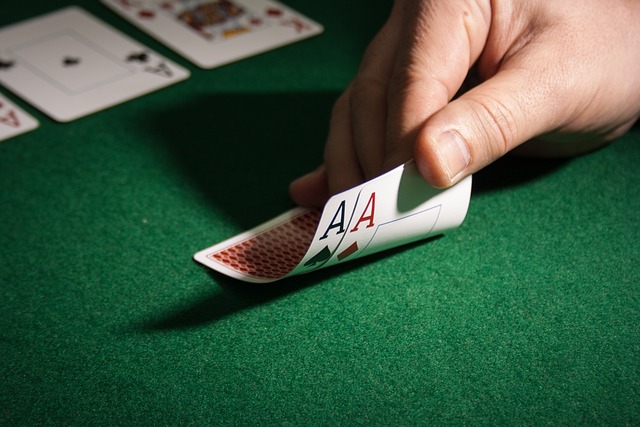
Poker is a game that requires a combination of skill, strategy, and psychology. One of the most powerful skills a player can develop is the ability to bluff. Bluffing in poker is an art that allows players to deceive and manipulate their opponents into thinking they have a stronger hand than they actually do.
In this article, we explore different aspects of bluffing in poker and provide useful tips on how to become a successful bluff player.
Understanding Bluffing
Bluffing in poker, the of the most popular in history, refers to deliberately representing a strong hand with the aim of deceiving your opponent. The goal is to convince your opponents to fold, even if they have a better hand than the player bluffing. This is achieved through strategic betting, raising the stakes, or displaying confidence at the table.
The significance of bluffing is underscored by the fact that some of the largest poker bluffs have been worth millions of dollars. Bluffing is a key skill in poker because it enables players to control the flow of the game and extract additional value from weaker hands. When done correctly, bluffing can be a powerful weapon that allows players to take control of the table, even when they don’t have the strongest hand.
It is important to note that bluffing always carries some risk, as there is a chance that your opponent will see through your bluff or have a stronger hand. Therefore, it is crucial to carefully assess the situation before deciding to bluff.
Analyzing Your Opponents
Opponent analysis is a critical element of bluffing in poker. To bluff successfully, it’s essential to understand the behavior and tendencies of your opponents at the table. Recognizing different types of players and gathering information about them is key. Additionally, it’s important to be able to recognize a bluff when it’s directed at you.
When seated at the poker table, it’s crucial to observe your opponents closely. Pay attention to each player’s style of play. Are they passive, playing cautiously, or are they aggressive, frequently raising the stakes? Are they prone to folding, or are they persistent in their play?
To gather additional information about your opponents, actively collect data throughout the game. Observe how they behave in different situations. Do they appear confident or nervous? How do they react to betting? Do they bluff often or tend to fold?
Also, keep an eye on your opponents’ physical signs and facial expressions. Hand movements, breathing, blinking—these can all reveal their emotions and state of mind. Do you notice changes in their behavior when they have strong or weak hands? Can you spot signs of nervousness or confidence?
Building Trust
Building trust with your opponents is another key element of successful bluffing in poker. When opponents believe that you have a strong hand, they are more likely to fold their weaker hands, which allows you to successfully execute a bluff.
One technique for building trust is creating the impression of a strong poker hand. When you decide to bluff, it’s important to present confidence and certainty in your hand. This can be achieved through firm and decisive betting, as well as maintaining a strong and calm demeanor at the table.
Your opponents will notice your self-assurance, which may lead them to assume that you have a strong hand.
Another way to build trust is by leveraging previous wins and showing strong cards. If you’ve recently won a significant hand or previously revealed strong cards, your opponents will remember those situations.
Psychological tricks can also be highly effective in building trust. You can use nonverbal communication, such as smiling, appearing relaxed, or speaking in a friendly tone at the table. These small gestures can contribute to creating a friendly atmosphere and building trust between you and your opponents.
Bluffing Techniques
Understanding bluffing techniques is crucial for successfully executing bluffs in poker. A combination of well-chosen techniques can help you bluff convincingly and win the hand. In this section, we explore three basic bluffing techniques: semi-bluff, pure bluff, and continuation betting.
Semi-Bluff
A semi-bluff is a bluffing technique you can use when you have a decent hand but the potential to improve. This technique involves betting or raising in order to force opponents to fold, even if you don’t currently have the strongest hand.
The idea is to create the impression of a strong hand while simultaneously having the potential to improve your hand in future rounds. A semi-bluff can be very effective because it combines elements of bluffing with the strength of your hand.
Pure Bluff
The second technique is a pure bluff, which you use when you don’t have a strong hand and are relying entirely on deception and manipulation to get your opponents to fold. This is a very risky technique because you are depending solely on psychological pressure and convincing your opponents that you have a strong hand.
To execute a pure bluff, you must be confident that your opponents have weaker hands and are willing to fold. This technique requires a good understanding of your opponents and the ability to read their reactions and behaviors.
Continuation Betting
The third technique is continuation betting, which you use after raising the stakes earlier in the hand. This technique is based on the idea that if you’ve previously shown a strong hand by raising, your opponents will believe you have a strong hand and will find it difficult to challenge you.
Continuation betting involves continuing to bet and raising the stakes to maintain pressure on your opponents. This technique can be very effective because it combines elements of bluffing with the strategy of building trust with your opponents.
Managing the Bluff
Executing a bluff is not enough—it’s important to have control over it and manage it correctly throughout the game. Bluff management involves carefully considering the risks and rewards, as well as adapting your strategy based on the situation.
Before deciding to bluff, it’s essential to carefully assess the risks and rewards. Every bluff carries some risk, as there’s a chance your opponents will see through your deception or have a stronger hand. Therefore, it’s important to consider the potential outcomes and assess whether the potential rewards are worth taking the risk.
Another key aspect of bluff management is adapting your strategy based on the situation. During the course of a game, the dynamics at the table can change, and your opponents may become increasingly aware of your bluffs.
Bluff management also requires a good understanding of your opponents. To bluff effectively, it’s crucial to observe and analyze your opponents’ behavior and reactions. If you notice that a particular opponent tends to fold weaker hands frequently, you can exploit this tendency for a successful bluff.
Finally, it’s important to maintain control over your emotions while bluffing. Stay calm and focused, regardless of the outcome. Emotions like fear or excitement can influence your ability to make rational decisions and assess the situation.
Therefore, it’s essential to remain composed and maintain control over your behavior.
Conclusion
Bluffing is a skill that can be extremely valuable in poker, but it requires careful thinking, opponent analysis, and proper bluff management. Understanding bluffing, analyzing your opponents, building trust, using different bluffing techniques, and effectively managing your bluffs are all critical factors for success.






